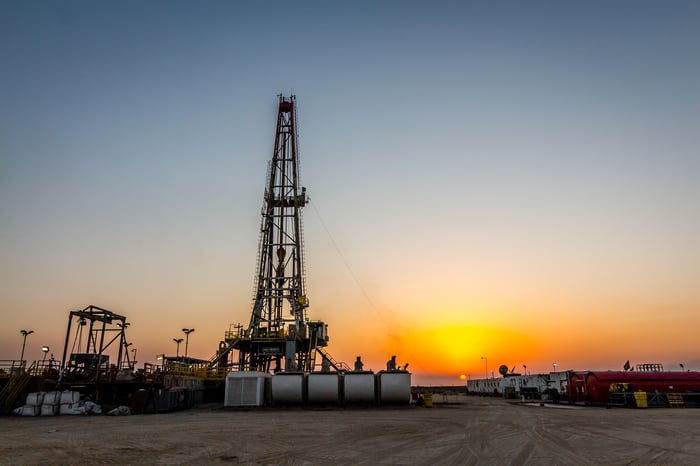What happened
Shares of Halcon Resources Corp. (HK) slipped on Thursday and were down more than 12% at 3:30 p.m. EDT after the Permian Basin-focused driller reported disappointing first-quarter results.
So what
Halcon Resources produced an average of 10,967 barrels of oil equivalent per day (BOE/D) during the first quarter. That's a stunning 75% above what it produced in the fourth quarter, though it's off a low base due to asset sales. Despite that big production boost and higher oil prices, Halcon Resources posted an adjusted quarterly loss of $8.7 million, or $0.06 per share, which was a $0.03-per-share deeper loss than analysts expected.

Image source: Getty Images.
Halcon also revised its full-year guidance. The company now sees output averaging between 15,000 and 20,000 BOE/D in 2018. That's up from its initial forecast that production would be between 15,000 and 19,000 BOE/D this year. Driving that increase at the top end is the inclusion of the recently acquired West Quito Draw properties in the Permian, which currently produce 1,350 BOE/D. The company's guidance also assumes that it will add a fourth drilling rig in May and bring a second well completion crew online in mid-August, which will cause production to be back-end weighted at an estimated 23,000 to 25,000 BOE/d in the fourth quarter.
Now what
Halcon Resources has an aggressive plan to increase output at a lightning-fast rate, to offset asset sales in recent years. It's a big bet on higher oil prices, since the company is significantly outspending cash flow to get up to where it wants to be as fast as possible. If oil remains high, the plan could pay off. If not, the company could drill itself into another hole, as it did before oil prices crashed a few years ago. That makes it a high-risk gamble that isn't suitable for most investors.





